Chitrakoot is a god gifted land in the state of Uttar Pradesh in India. Situated in the district of Banda in the state, this lovely land is on the banks of the River Payswani or Mandakini. This serene zone in this part of India is a great retreat on the northern side of the mighty Vindhya Mountains. In fact, Chitrakoot Dham is one of the most ancient places of Indian pilgrimage. But, Lord Rama’ s famous stay in Chitrakoot falls in Madhya Pradesh as well as Uttar Pradesh. The detailed account of our first day in Chitrakoot is available at:
Motorcycle Ride to Mythological Chitrakoot Part 1/2
Second day, we went to the Madhya Pradesh Side of Chitrakoot, that includes Sati Anusuya, Gupt Godavari, Sphatik Shila and Hanuman Dhara.
One important thing to keep in mind while you go to Chitrakoot that the places and temples are quite far from each other, so you cannot visit them on foot. You have to arrange your own vehicle or hire a taxi, or most popular auto rickshaws. Auto Rickshaws are a good bet to see every place in Chitrakoot in a single day.
Sati Anusuiya Ashram: Sati Anusuiya Ashram is situated further upstream on the bank of Mandakini River and some 17 km away from Chitrakoot city.To reach there, you have to take the main road from Chitrakoot to Satna. After 12 kms there is a small road leading to Sati Anusuiya Ashram. This 5 kms of road is in very bad condition with lot of potholes. So be prepared for a bumpy ride that passes through a small forest. There was little water in the river; whatever there was, was stagnant and covered in algae. It was a great shocked for me. When I came here earlier in my childhood, I saw lots of fish swimming in the crystal clear water. Fish were still there, but water is much polluted now.
The temple itself was partly cut into the near-vertical cliff face that rose straight up from the riverside road. It is dedicated to Maharsi Atri and his wife Sati Anusuiya. Sati Anusuiya transformed the three supreme gods-Brahma, Vishnu and Shiva to small babes by her miraculous powers earned by penance. She is also believed to have brought down the Mandakini which is believed to be a stream let of the river Ganges. The Ashram has an idol of Anusuiya, her husband Maharshi Atri, their sons Duttatreya, Durwasa, Chandrama and various other gods and sages. The big temple just in front of the ghat was made by Paramhans Ashram trust. The original small temple is some 200 meters away from this one. But very few people go there,may be due to unawareness. They visit the first temple of trust and return back. Monkeys are a permanent presence and how many I could not count.
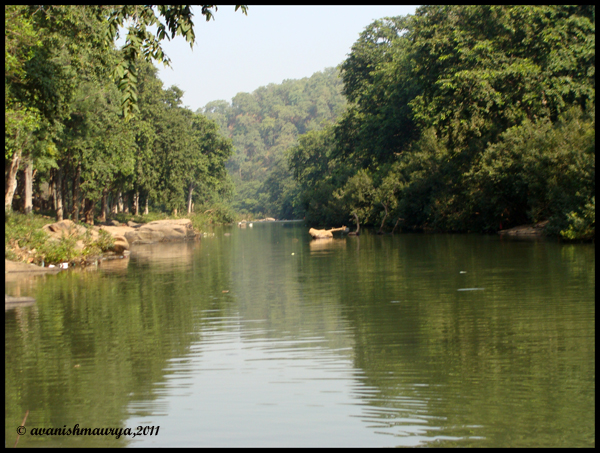

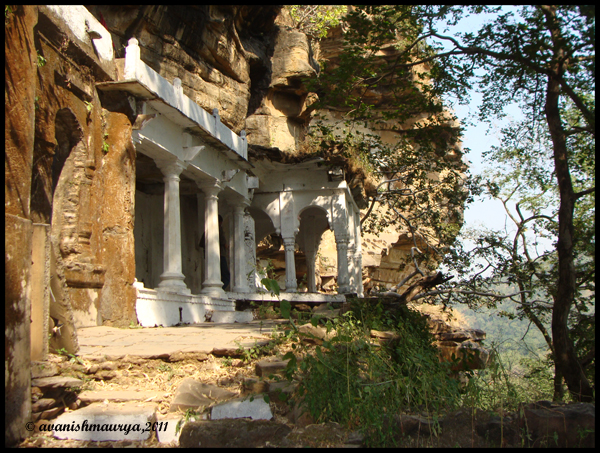
Gupt Godavari: After visiting Sati Anusuiya Ashram, come back to the main Chitrakoot-Satna Road. Gupt Godavari is further 8 kms away from here. Proceed towards Satna for 2-3 kms and then a small road is leading towards Gupt Godavari. Road condition is very good upto Gupt Godavari. This is actually a cave temple. There are two caves: one which contains a temple, and the other which contains an underground river. As we entered the first cave, we suddenly felt warm and realized how terribly damp the inside was. The rocky walls were strange; they showed vertical marks as if cut away with enormous electric saws. The inside was quite well lit.
The second cave has a tiny river flowing through it. Actually you can see it outside, and then it suddenly disappears. The water was ankle deep near the entrance of the cave, but rose almost up to the knees inside. It was crystal clear, though, and this cave was also quite well lit with big lamps like the first one. The barefoot walk over the rock-and-sand bottom in this cold water felt delightful. At one point on looking up we saw hundreds of bats hanging upside down from the ceiling of the cave.
Officially photography is not allowed here (as told by a kid caretaker in the Cave No.1), but i did’t see any board or information sign regarding this and nobody there was bothered about it. Many of them had clicked photographs here.
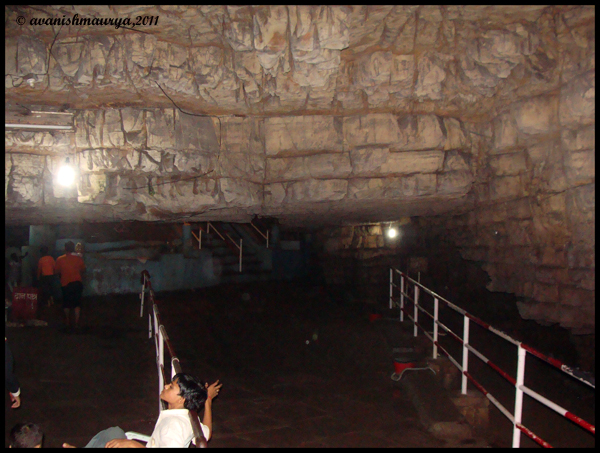

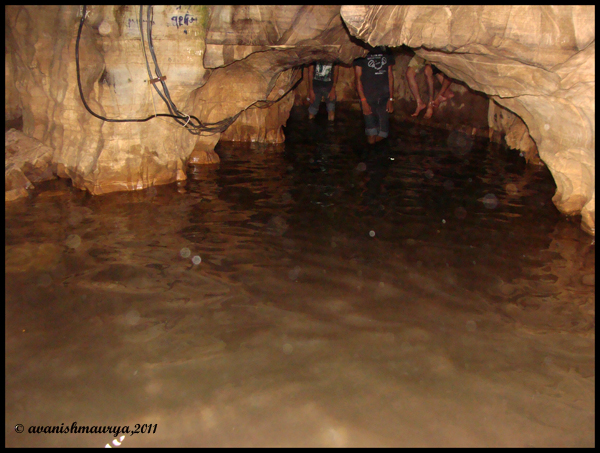
Sphatik Shila: This is situated near Chitrakoot Gramodaya University and some 5 kms away from Ram Ghat. The university is situated at the main Chitrakoot-Satna Road. Just before the University there is a small road going towards Sphatik Shila for 1 km.
This picturesque spot is marked by two immense rocks. It is believed to be the place where Lord Rama and Sita feasted their eyes on the beauty of Chitrakoot. . According to the legend, Once, Jayant, the son of Indra pecked at the feet of Sita to test the might of Lord Ram. Thereupon, Ram, sitting in the Veerasan Posture (a yoga posture), released an arrow at him. Jayant could not find anyone in the whole universe, who could protect him against this arrow and ultimately sought shelter with Lord Ram himself, who pardoned him after taking one of his eyes as punishment. The rock bears the foot prints of Sri Ram, Sita Ji and Jayant.
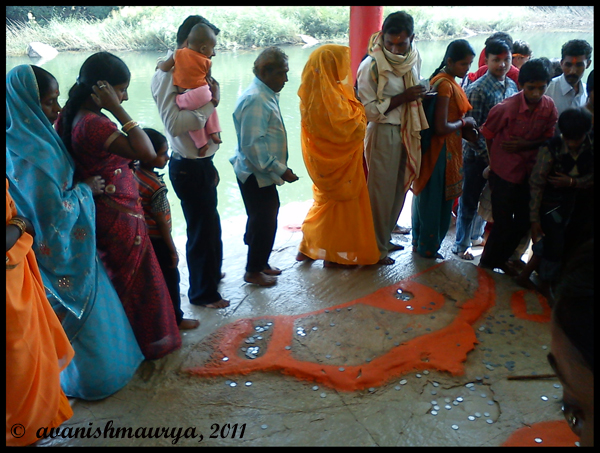
Hanuman Dhara: This is some 5 kms away from Ram Ghat and a different road is going to this place from Ram Ghat. This is a temple cut in the rocky face of a hill near its summit. It has to be reached by climbing up 591 steps. The temple contains an idol of Hanuman, the Monkey God, and a small natural mountain spring, or ‘dhara’ next to each other. On each temple, Priest insisted us to offer some cash on the statues of Gods and this went on and on until we were out of change in cash. It’s a very common incident that happens with most of the tourists there. Please handle it with intellect and try to ignore the aggressive attitude of priests. We were bit disappointed with the behavior of priests on those temples.
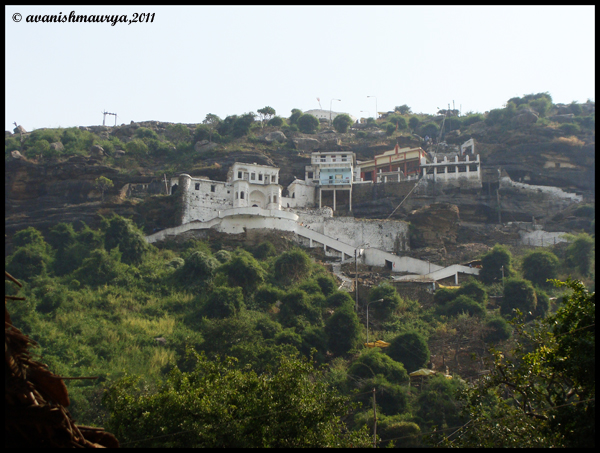
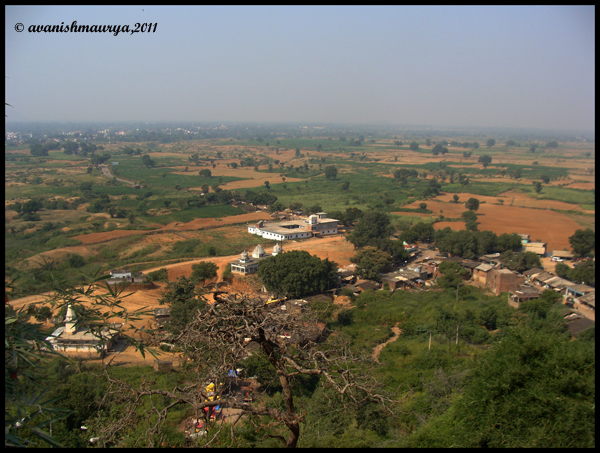
Rajapur: While returning back to Allahabad, we took a different route this time. Our new route was via Pahari-Rajapur-Mahewaghat-Manjhanpur-Bharwari-Bamrauli-Allahabad. This route is very good and distance is almost the same in comparison to our day before journey via NH76. While we reached Rajapur (40 kms from Karwi) , we saw a board stating that this town is the birthplace of Goswami Tulsi Das. We went to the birthplace of Tulsi Das. On the bank of the Ganges, this place is very peaceful. The newly constructed bridge over The Ganges to connect Mahewaghat and Rajapur provides an excellent view of riverside scenery.
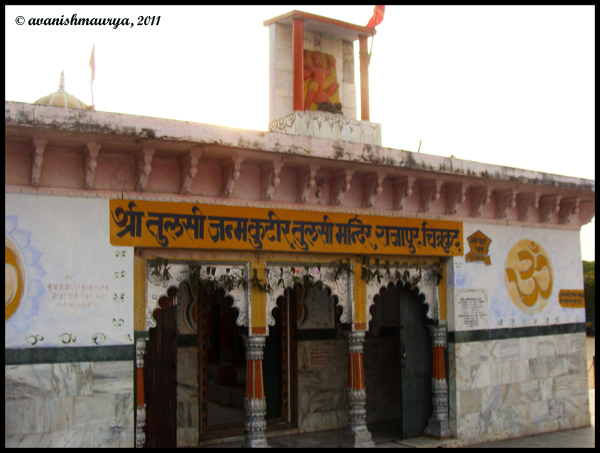
Adjacent to the birthplace, there is a small Manas temple, in which original manuscript of Ayodhya Kand of Ramcharit Manas, written by Tulsi Das, is kept in a safe. However we couldn’t see the manuscript as the priest was in a bit hurry to close the temple that evening. But the priest gave us a brief description about the manuscript. He showed us the safe and told that to open the manuscript and then wrap up again will take at least 30 minutes time. The manuscript is written on paper, instead of birch tree bark (bhojpatra) like other old manuscripts. The paper is old and preserved with a tissue covering.
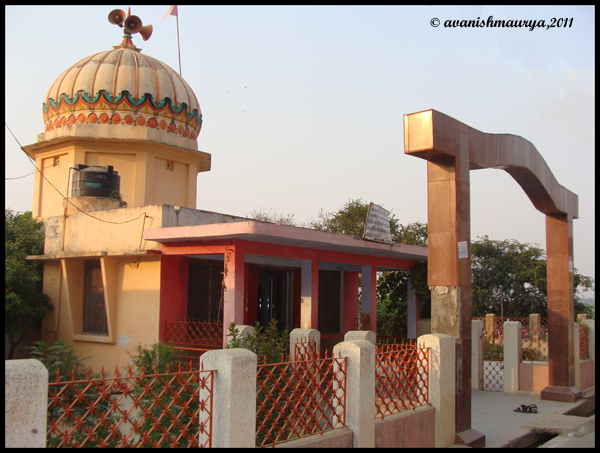
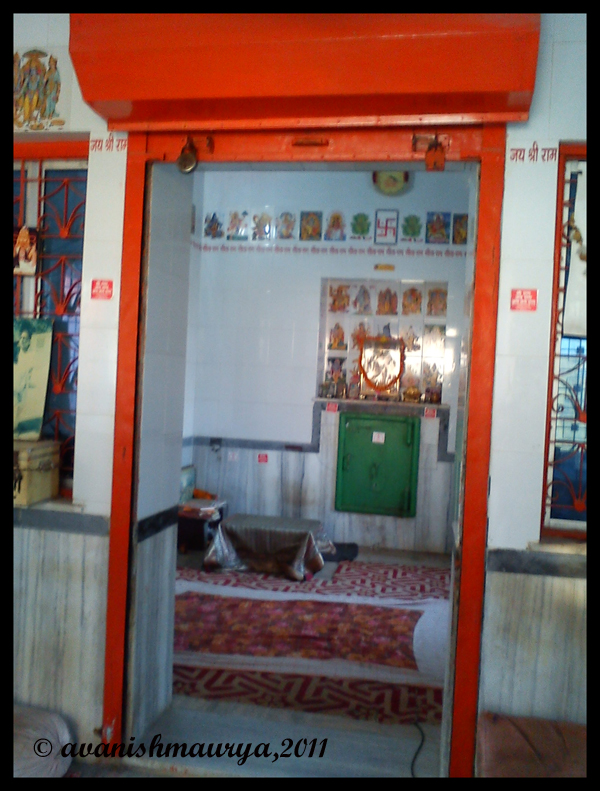
From there, we continued our journey further and reached Allahabad by 8 PM.
This trip was memorable because of a very special quality that Chitrakoot possesses: in spite of being a pilgrimage town, it has not become an overcrowded, dirty business centre. Not yet. It feels really good to go far from the city crowd and spend a couple of days in a quiet little place like this in the midst of nature.


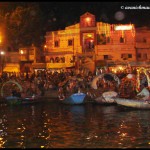
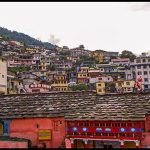

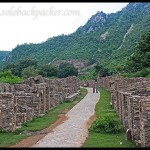


hare krishna very nice pics